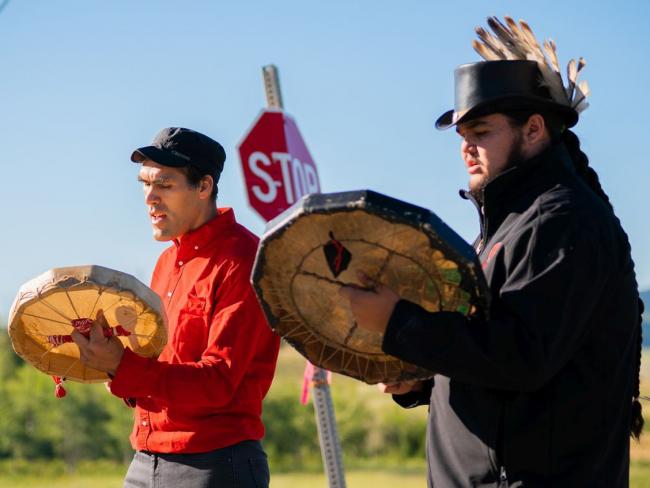Articles Menu

Apr 26, 2021
Aboriginal title over large tracts of 95 per cent of B.C. that's now referred to as Crown land would entail “huge transfer of wealth.”
VICTORIA — The B.C. government should prepare the public for the coming “big shock” when “fairly large chunks” of provincial Crown land are recognized as actually owned and controlled by Indigenous Nations.
So says Jack Woodward, the lawyer who won the case that resulted in the first declaration of Aboriginal title in B.C. and who is taking another title case to court next year.
“Much of the Crown land in B.C. isn’t Crown land — it is owned by Indigenous people,” says Woodward, drawing on his reading of history, constitutional law and the Supreme Court of Canada (SCC) decision in the Tsilhqot’in title case in 2014.
“Over the next generation we’re going to see a replacement of ownership of large parts of the province. It is going to be a big shock and a big change and a big adjustment for the system to get used to.
“There’s going to be a different landlord — not for the entire province … but fairly large chunks of it.
Woodward laid out his assessment of the shape of things to come for Crown land and Aboriginal title in an hour-long presentation last month organized by The Campbell River Mirror. Woodward, who is based in Campbell River, has posted the entire presentation on his Facebook page.
The overview was a prelude to a case set down for the B.C. Supreme Court in March 2022. Woodward represents the Nuchatlaht First Nation, which is asserting title over Nootka Island on the west coast of Vancouver Island.
While Woodward is confident of another win, it will be up to the court to determine whether the case is as solid as the earlier proceedings, where the SCC declared Aboriginal title over more than 1,700 square kilometres of land in the Chilcotin.
But the implications are clear, based on the B.C. government’s own briefing notes on the Tsilhqot’in case, prepared after last fall’s provincial election for the incoming minister of Indigenous Relations and Reconciliation.
The SCC decision means the Tsilhqot’in-speaking Xeni Gwet’in First Nation “effectively own the land — they have the right and responsibility to manage and control how it is used,” says the recommended response for the incoming minister should he be asked about the case. “Similar to private property, Aboriginal title means the Nation owns the lands and resources in the declared title area” — i.e., the 1,700 square kilometres recognized by the court.
Shortly after the briefing note was drafted, Murray Rankin, the former NDP MP for Victoria and newly elected MLA for Oak Bay, was named minister of Indigenous Relations and Reconciliation.
The recognition of Indigenous ownership has generated anxiety among holders of Crown-granted tenures — ranchers, guide-outfitters — and owners of private property in the affected area.
“Since the SCC did not lay out a clear path on how to implement the decision, tenure-holders and property owners within the declared title area have expressed concern about how the decision impacts them,” the briefing note acknowledges. “The province, federal government, Tsilhqot’in Nation government, Xeni Gwet’in and tenure-holders are all working together to achieve predictability for everyone affected by the decision. Tenure-holders should continue to engage with the Tsilhqot’in national government and the Xeni Gwet’in as this work moves forward.”
The province encourages the First Nation to buy out tenure-holders and property owners and to that end it has provided some funding “to support acquisition at a fair market value.” B.C. insists that “there are no secret negotiations — the province is committed to transparency and is in regular contact with stakeholders.” Not everyone in the region agrees and the government acknowledges receiving “a large volume of correspondence from concerned citizens.”
Woodward, in one of his more provocative comments, suggests that where Aboriginal title is recognized, a Crown tenure is “a worthless piece of paper.” The province will probably have to provide some sort of compensation for tenure-holders. The end result, says Woodward, will be local control by First Nations, as opposed to forestry and other tenures being held by multinational corporations.
The government, for its part, says the costs and complications of the Tsilhqot’in decision “illustrate why issues of rights and title are best resolved through negotiation rather than litigation.” Woodward says treaty talks tend to lack firm mandates, leading to an endless go-round at the bargaining table. Whereas a judge can clarify what is and is not on the table.
Granted, it took more than 300 days of court proceedings to complete the Tsilhqot’in case, not counting appeals. But as Woodward notes, the deliberative process means that the government has time to prepare the public for the ownership transfers to come. There are more than 200 recognized First Nations in B.C. but many don’t yet have the resources or the inclination to proceed to court.
The question of title arises because Europeans settled B.C. for the most part without the treaties that clarified ownership in other parts of North America.
“A mistake that now has to be fixed,” he calls it, while suggesting that British Columbians take pride that the recognition of Indigenous ownership is “being implemented in an orderly, sensible, legal way.”
Still, as Woodward also notes, recognition of Aboriginal title over large tracts of the 95 per cent of B.C. that is now (perhaps mistakenly) referred to as Crown land would entail “a huge transfer of wealth.” However inevitable that wealth transfer might be, I doubt any elected government would find it easy to admit that much to the public.
[Top photo: Then-NDP candidate and now Minister of Indigenous Relations and Reconciliation Murray Rankin arrives at his campaign headquarters in Victoria on Oct. 19, 2015. PHOTO BY TBA /PNG]